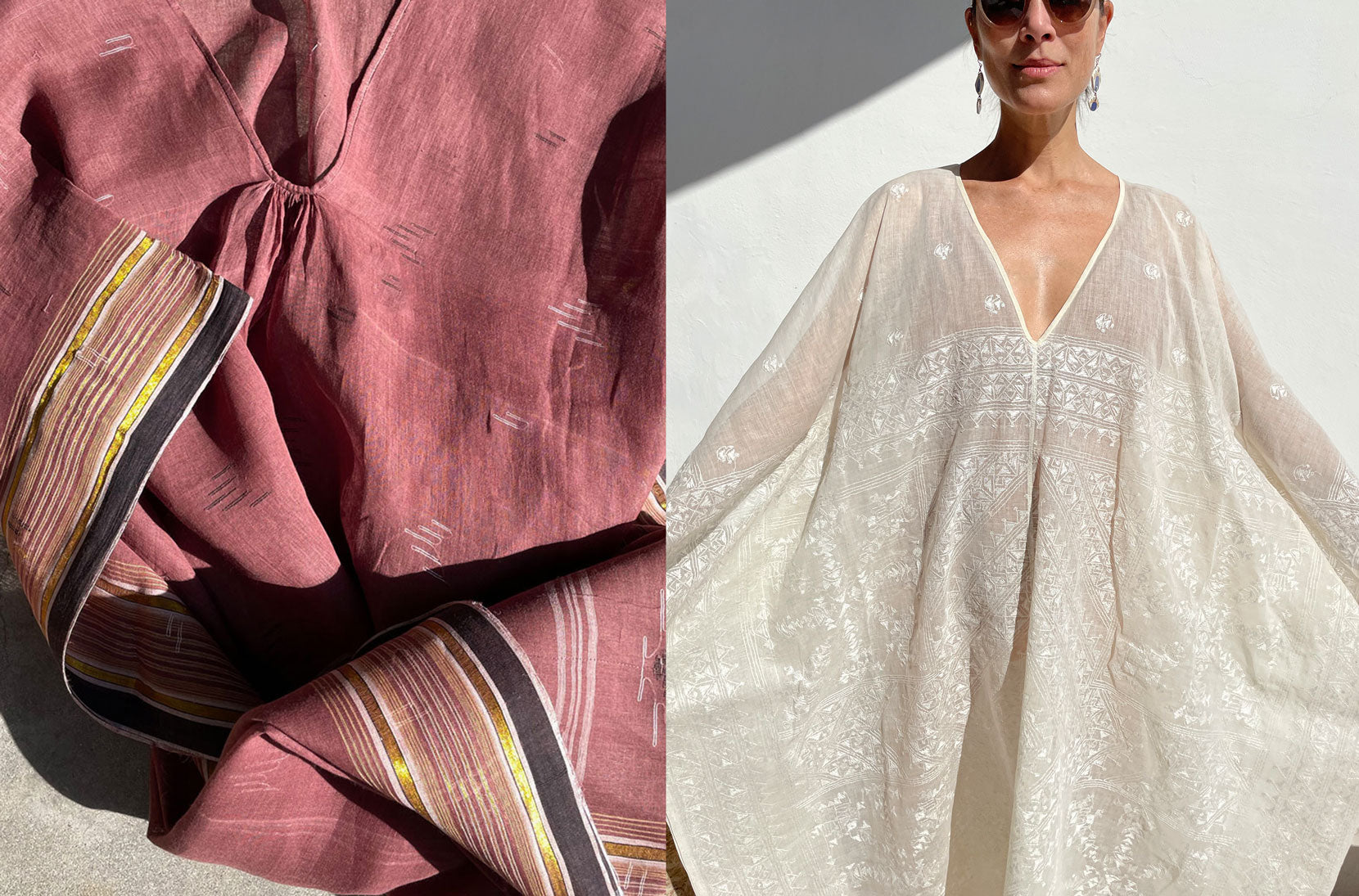About our fabrics
In 2010 we began our journey of researching fabrics all over India. Having an Indian father and Italian mother i wanted to combine the two worlds and celebrate the beautiful saris and textiles I came across. I wanted to create a wearable and minimal line in comfortable, soft textiles. Upon traveling i learned so much from the history and culture each piece holds. Every region of India has its very own technique. The time staking devotion people give to textiles is almost sacred.
Hence we realized the hand loomed sari is in fact a dying art and we hope to bring the experience of having a special piece to those who love textiles as much as we do...
We often source our fabrics or design them ourselves. After having worked
TEXTILES WE WORK WITH
Khadi is the fabric of India. A textile which makes use of no external power. From the harvest of the cotton, to the removal of the seeds, separating the fibers to spinning, dying and weaving, everything is done manually. This is an artisanal handloom textile made entirely from hand crafted processes.
“If we have the ‘khadi spirit’ in us, we would surround ourselves with simplicity in every walk of life. The ‘khadi spirit’ means infinite patience. For those who know anything about the production of khadi know how patiently the spinners and the weavers have to toil at their trade, and even so must we have patience while we are spinning the thread of Swaraj (Independence).”
-Mahatma Gandhi
Ikat is an ancient yarn tie and dye technique which patterns and motifs are achieved on the yarn even before it's woven into the fabric. It is a highly mathematical equation. This complex method involves the laborious task of wrapping the yarn to a preconceived pattern and dyeing the exposed sections. Each time a new colour is required the yarn is re-tied and re-dyed. Once the desired patterns are achieved the weaver then painstakingly adjusts each thread to form the Ikat pattern.
Dabu printing is a traditional, rigorous process done in a mud-resist dyeing, hand-blocking technique that takes place in Bagru, India. After the cloth is washed, soaked, dyed and dried, the fabric is ready to be printed on. Skillful artisans dip their blocks (usually made with clay, lime, wheat chaff and/or gum) and press them onto the fabric and into natural dyes to create the desired prints. Dabu fabrics use natural dyes and vegetable paste which are eco-friendly, skin-friendly and retain the most of its lifetime.


